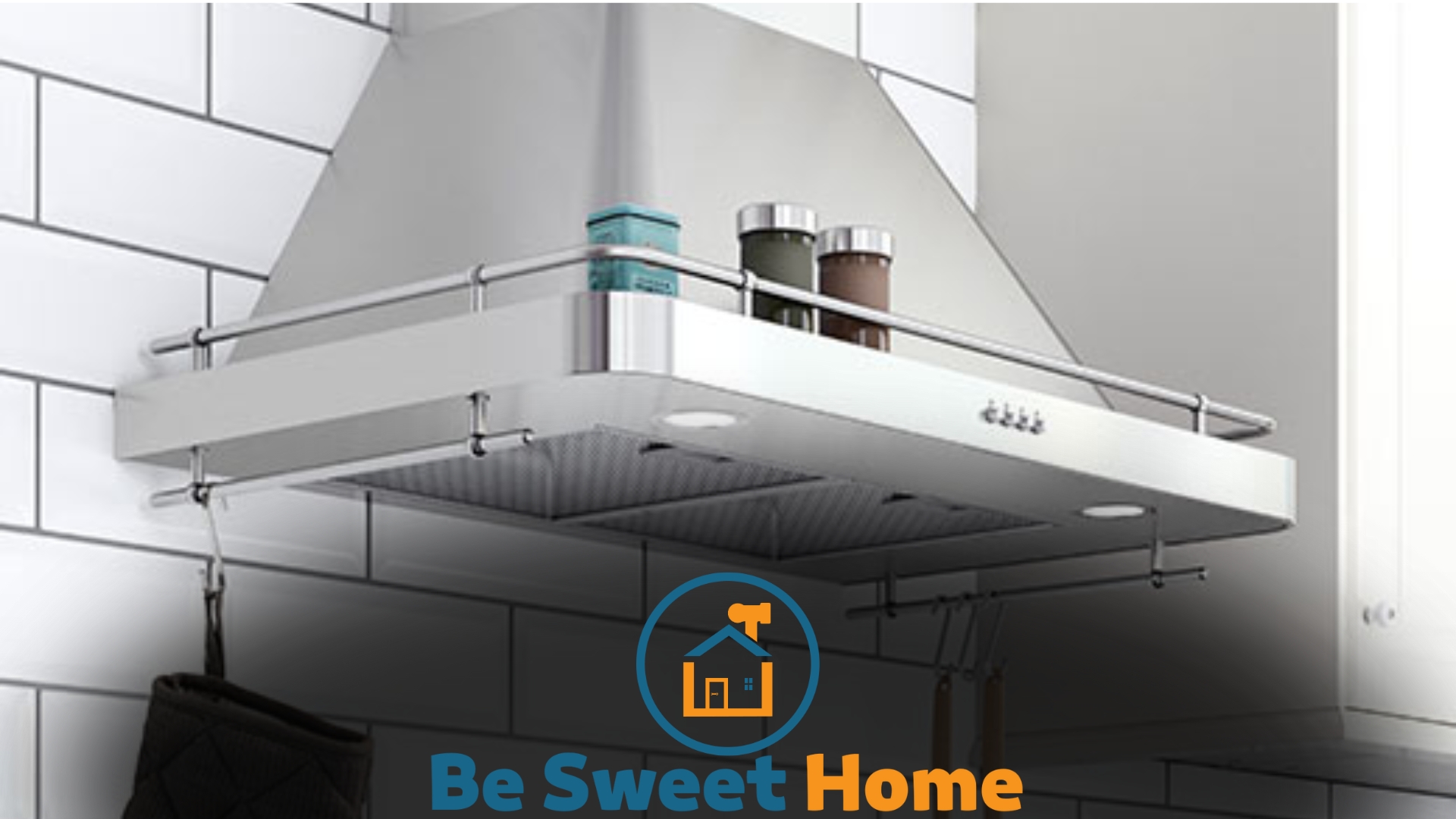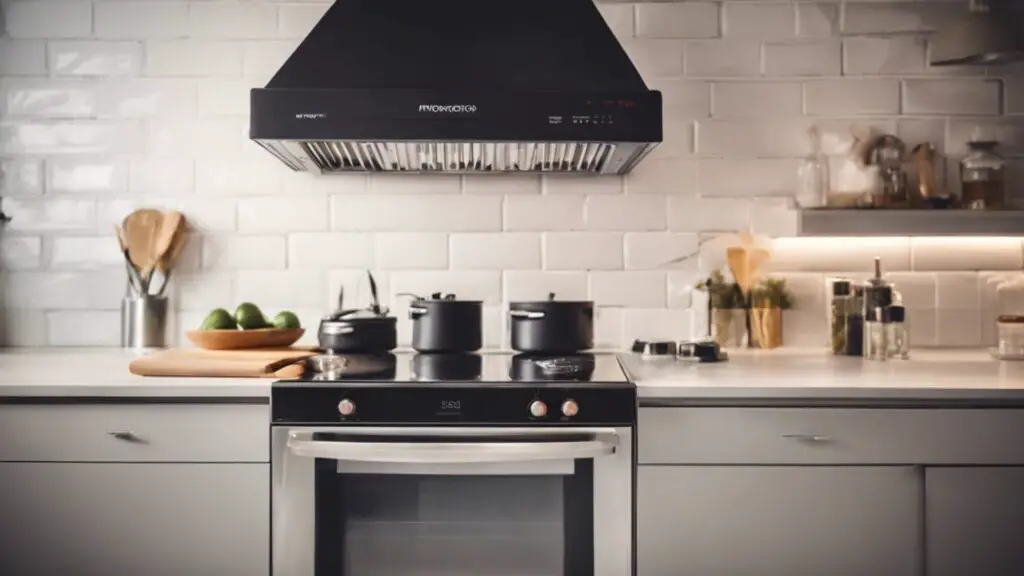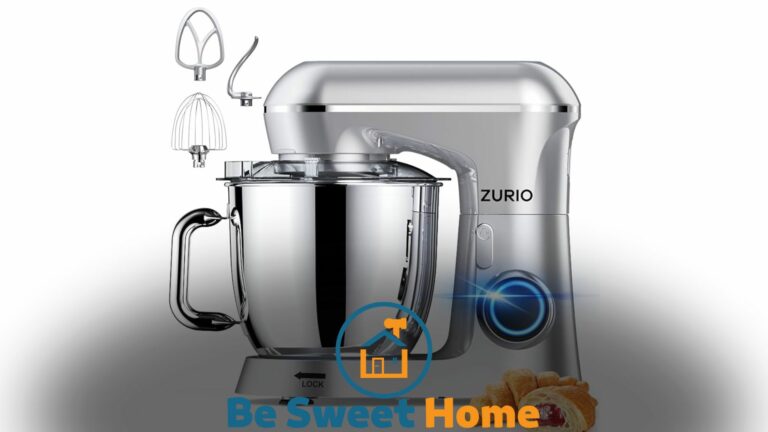

Regularly clean the filters and check for duct blockage to improve a kitchen extractor fan. Ensure proper installation and consider upgrading to a higher capacity model for better efficiency.
Kitchen extractor fans are pivotal in maintaining a clean and odor-free cooking environment. Tackling grease, smoke, and odors are essential components in any kitchen.
Periodic maintenance is crucial to keep them running optimally. This includes cleaning or replacing filters, ensuring unobstructed airflow passages, and the fan mechanisms in good working order.
A well-maintained extractor fan improves the air quality and extends the appliance’s lifespan, leading to better long-term performance.
For those with older or underperforming units, exploring the latest models with enhanced extraction technology may provide a significant improvement.
Remember, a high-functioning extractor fan contributes to a pleasant and healthy kitchen, making maintenance efforts worth the time and energy invested.
The Basics of Kitchen Ventilation
Understanding the basics of kitchen ventilation is key to a fresh and safe cooking space. It keeps the air clean and reduces grease buildup.
A good kitchen extractor fan plays a vital role in this process. Let’s explore how to improve this essential appliance.
Components of an Extractor Fan
Kitchen extractor fans consist of several parts. Each part ensures that the fan functions effectively:
- Hood – Catches smoke and steam.
- Filter – Traps grease and particles.
- Fan motor – Powers the fan to draw air.
- Ducting – Channels dirty air outside.
- Control switch – Adjusts fan speed.
Importance of Proper Ventilation
Good ventilation keeps your kitchen air clean. It is important for:
- Health – Reduces harmful pollutants.
- Safety – Limits fire risks from grease.
- Comfort – Lowers heat and odors.
- Maintenance – Prevents damage to surfaces.
Improving your extractor fan can significantly enhance kitchen ventilation. Regular cleaning, timely filter replacement, and proper maintenance are vital. This ensures a clean, safe, and pleasant cooking environment.
Signs of Inefficiency in Extractor Fans
Your kitchen extractor fan works tirelessly to remove smoke, steam, and unwanted odors. Is it losing its efficiency? Recognizing the signs can ensure your kitchen remains comfortable and safe.
Identifying Reduced Airflow
Reduced airflow is a telltale sign that your extractor fan needs attention. Check for these indicators:
- Slower clearing of smoke or steam indicates a drop in suction power.
- A grease and dirt buildup around the filters could restrict the flow.
- Look for persistent odors that don’t dissipate as they used to.
Perform a simple paper test: hold a sheet near the vent. Does it cling promptly? If not, airflow might be compromised.
Recognizing Odd Noises and Vibrations
Unusual sounds or vibrations are not to be ignored.
Let’s discover further:
| Sounds | Possible Reasons |
|---|---|
| Rattling | Loose components or screws could be the culprit. |
| Humming | An obstruction in the fan blades or a motor problem may be present. |
| Grinding | The bearings might be worn out or lack lubrication. |
Address strange noises soon to avoid bigger issues and maintain a serene kitchen environment.
Regular Maintenance for Peak Performance
Regular Maintenance for Peak Performance keeps your kitchen extractor fan working smoothly. Dirt and grease can slow it down. A clean fan means less noise and more power. Follow these tips for a better fan.
Cleaning and Degreasing
Clean the fan regularly to boost airflow and efficiency. Use these steps:
- Turn off and unplug the extractor fan.
- Remove the cover and use a cloth to wipe away dust.
- Mix warm water with a degreaser.
- Dip a sponge in the mixture and scrub the fan blades and housing.
- Rinse with a damp cloth.
- Dry parts before reassembling.
Checking and Replacing Filters
Filters trap grease and odors. They need checks and changes to work well. Follow these steps:
- Pull the filter out gently to inspect it.
- Look for clogs or damage.
- Replace if needed.
- If the filter is metal and washable, clean it as instructed.
Remember to replace disposable filters every 3 to 6 months for best performance.
Upgrading Your Extractor Fan
Is your kitchen extractor fan not keeping up? It might be time for an upgrade. Grease, smoke, and odors can linger without an effective fan.
A modern, more powerful extractor fan can transform your kitchen environment.
Choosing a Higher-Capacity Fan
Consider your kitchen’s size and usage when picking a new fan. A higher-capacity fan can handle more air. This keeps your kitchen fresher.
Here are key points:
- Measure your kitchen – Bigger kitchens need stronger fans.
- Check venting options – Is external venting possible?
- Understand CFM ratings – This measures air movement.
- Look at noise levels – Higher capacity doesn’t mean louder.
Innovations in Fan Technology
The latest fans come packed with tech! These improvements mean better performance.
| The fan adjusts to cooking vapors. | Benefit |
|---|---|
| Energy Efficiency | Saves on electricity. |
| Auto-Sensors | Fan adjusts to cooking vapors. |
| LED Lights | Improves visibility. |
| Easy Cleaning | Filters are dishwasher-safe. |
These options make kitchen extractor fans better for any home.
Improving Ventilation Pathways
Kitchens need fresh air for cozy cooking. An extractor fan works hard to pull smoke and smells out. Yet, sometimes, it needs help. Better airways mean a fresher kitchen.
Let’s make your fans more awesome!
Optimizing Ductwork
Ducts are the fan’s secret tunnels. They carry air out smoothly. To boost your kitchen fan, start here:
- Check the route: Straight paths work best.
- No kinks or sharp bends: They slow the air down.
- Keep it short: Long ducts make the fan tired.
- Fit the size: Too big or small? Not good!
Sealing Leaks and Insulating Ducts
Leaks in ducts are like holes in a bucket. Air escapes, and smells linger. Insulation keeps noise and cold out.
Here’s what to do:
- Find leaks: Use your hand or smoke to spot them.
- Seal them well: Duct tape or mastic does the trick.
- Wrap it up: Insulation keeps your air warm and quiet.
Regular checks keep your extractor fan happy. Do these steps and enjoy a breath of fresh air in your kitchen!
Smart Controls and Automation
Embrace the future of kitchen ventilation with smart controls and automation for your extractor fan.
This tech-savvy upgrade enhances functionality and streamlines your kitchen’s workflow.
Let’s explore how to take your kitchen extractor fan to the next level.
Installing Variable Speed Controls
Variable speed controls offer tangible benefits.
Here’s why:
- Energy Efficiency: These controls adjust fan speed based on cooking intensity.
- Noise Reduction: Slow down the fan when less power is needed to reduce noise.
- Extend Lifespan: Running at optimal speeds means less wear on your fan.
To install, follow these steps:
- Turn off your kitchen power supply.
- Remove the extractor fan’s cover.
- Connect the variable speed control as per the user manual.
- Replace the cover and restore power.
Integrating Smart Home Systems
Smart home systems make your kitchen extractor fan responsive and intelligent.
Here’s what they can do:
| Feature | Benefit |
|---|---|
| Voice Activation | Control your fan with simple voice commands. |
| Schedule Running Times | Program fan to run at certain times for routine ventilation. |
| Sensors Integration | The fan activates when it senses smoke or high humidity. |
Integrating smart systems involves:
- Choose a smart home system compatible with your extractor fan.
- Install the system’s hub and fan modules.
- Follow the app setup for customization and control.

Frequently Asked Questions
How Does Cleaning Affect Extractor Fan Performance?
Regular cleaning of the kitchen extractor fan removes grease and dirt buildup, ensuring optimal airflow and improved efficiency.
Can Upgrading the Filter Improve Fan Function?
Yes, installing a higher-quality filter can capture more particles, reduce odors, and enhance overall extractor fan performance.
What Impacts Kitchen Extractor Fan Speed?
Obstructions, dirty blades, or a malfunctioning motor can all negatively impact the speed and effectiveness of a kitchen extractor fan.
Are Silent Extractor Fans More Efficient?
Silent extractor fans aren’t necessarily more efficient but provide a more comfortable kitchen environment while maintaining air quality.
How Often Should I Service My Extractor Fan?
Servicing your kitchen extractor fan annually can prevent performance issues and extend the unit’s lifespan.
Conclusion
Maintaining an efficient extractor fan in your kitchen is crucial. Following the abovementioned practical steps, you can ensure clean air and a fresh cooking environment.
Regular checks and prompt action keep your kitchen welcoming and your fan in top condition.
Embrace these tips for a happier, healthier home.







